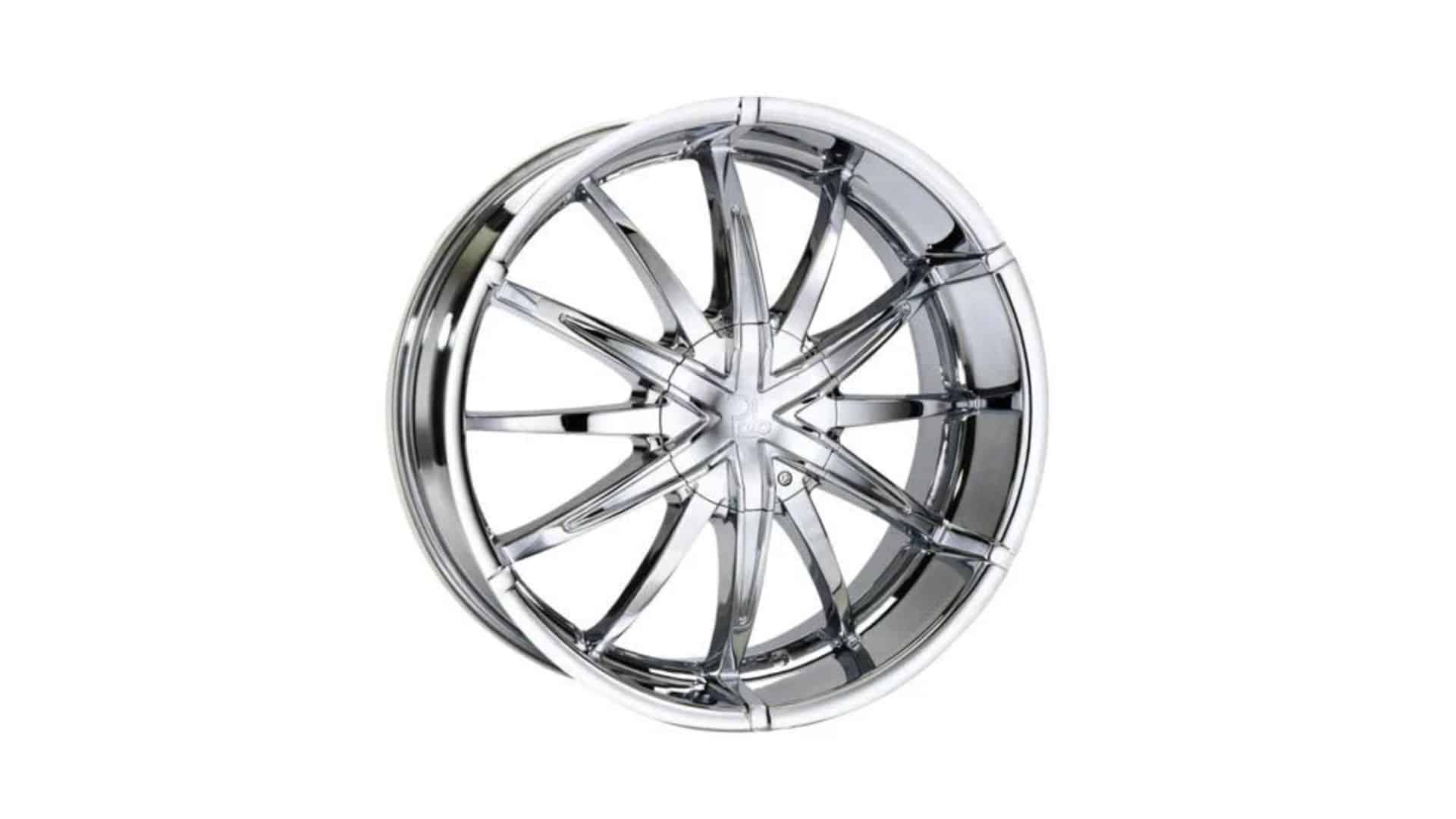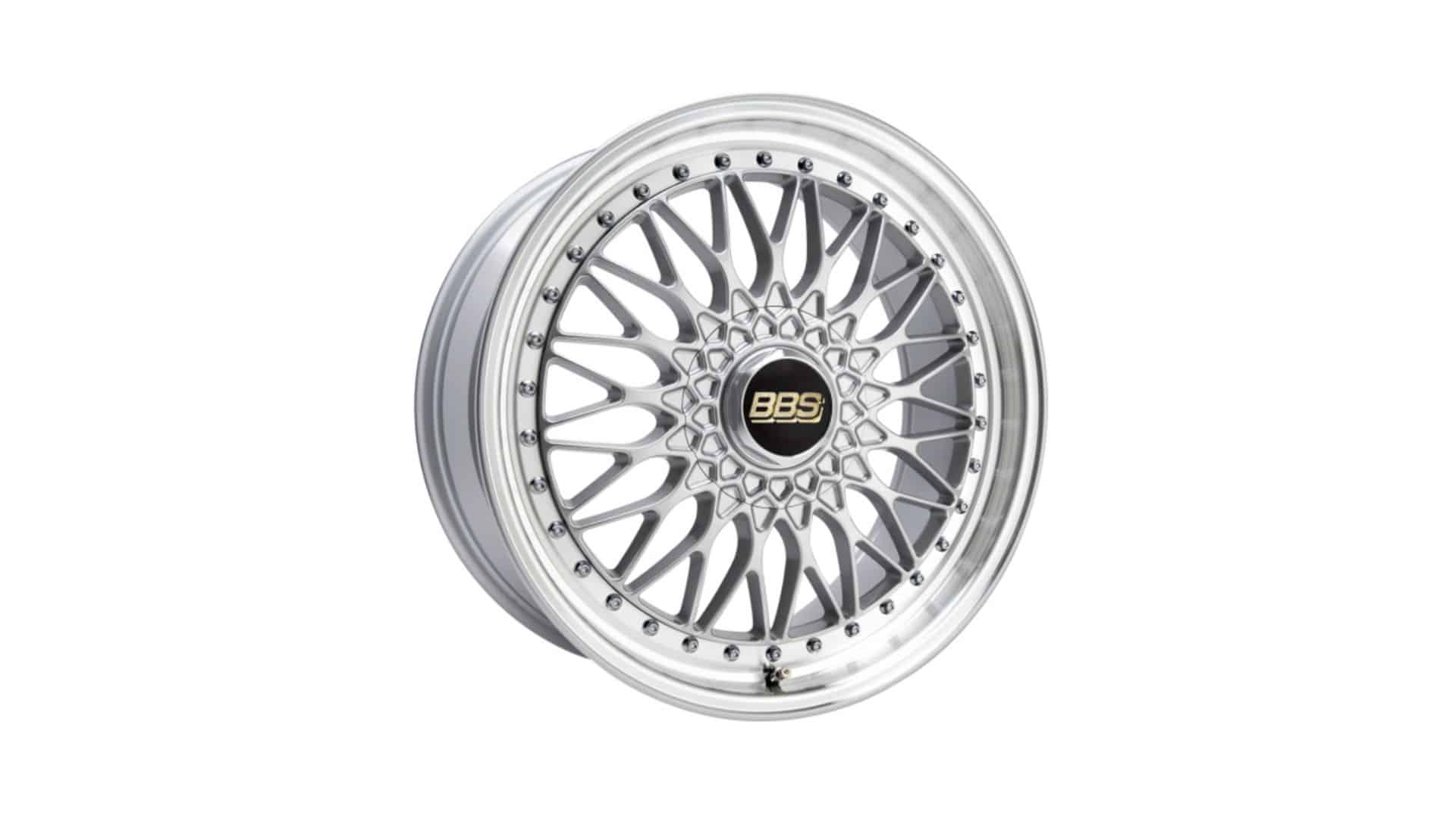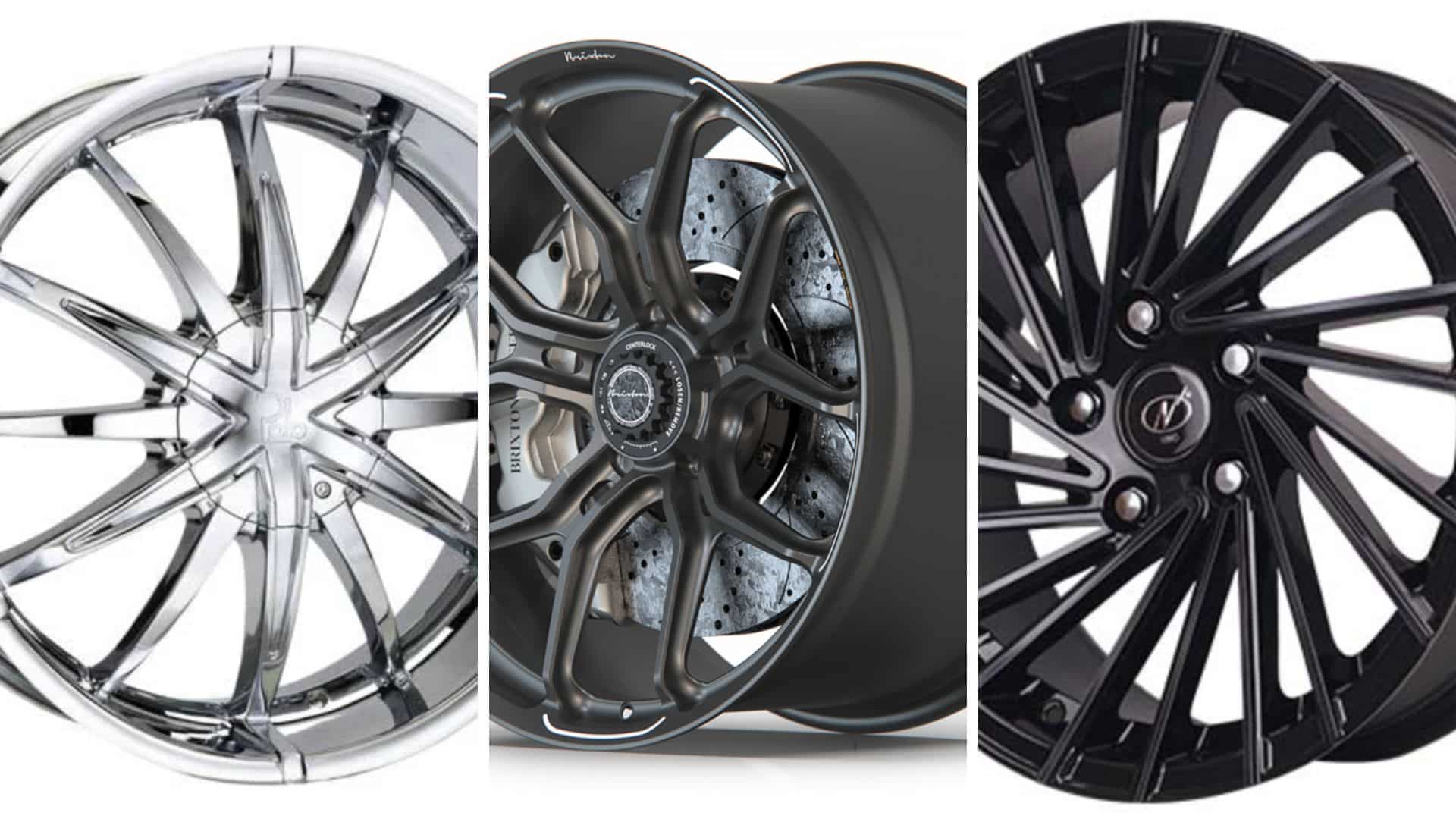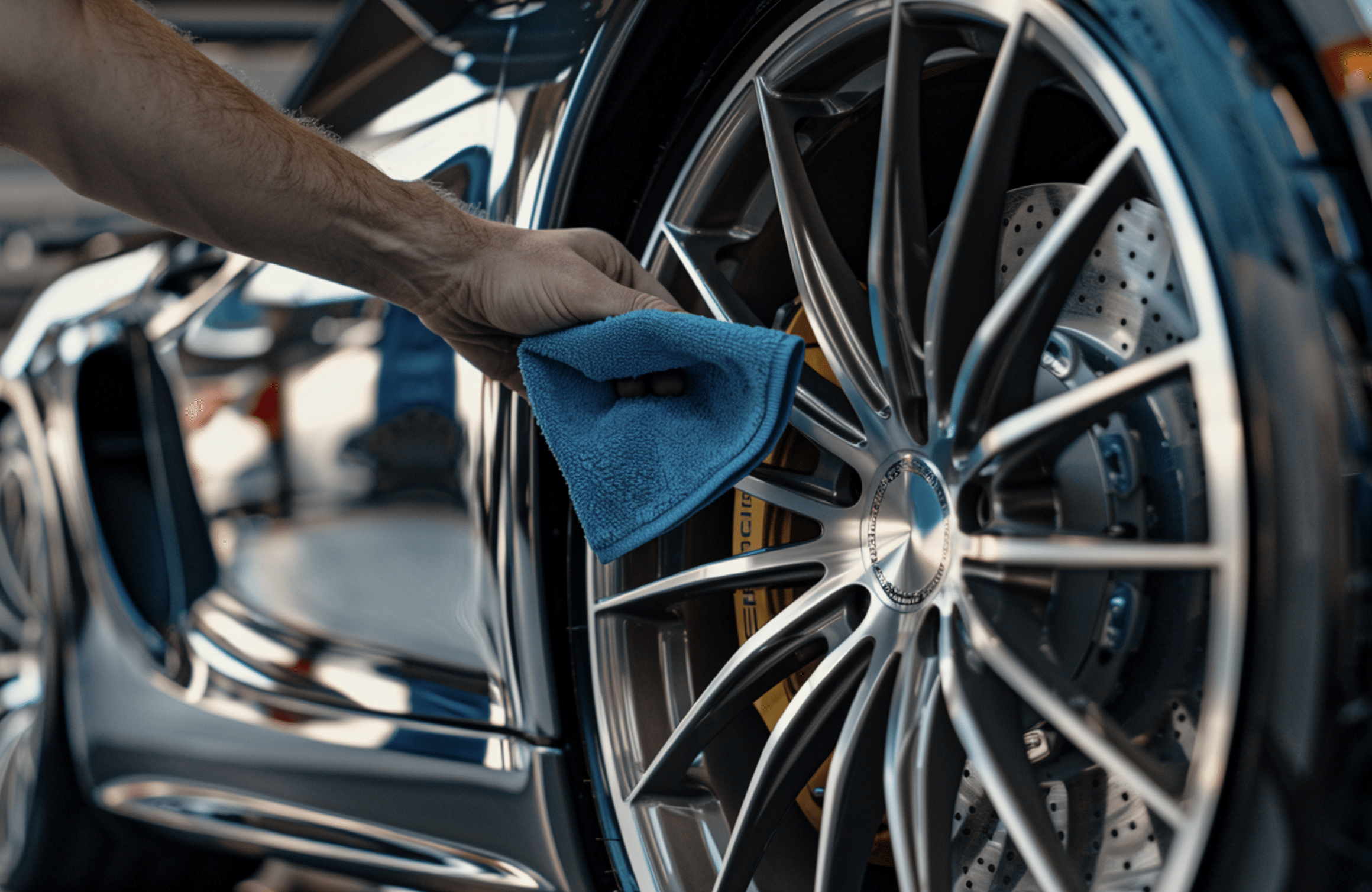Choosing the right rims for your vehicle is an important decision that affects its looks, performance, handling, and gas mileage.
With so many rims, selecting the best option for your needs and tastes can be challenging.
Alloy rims have gained popularity among car lovers because they are light, strong, and visually appealing.
Made by combining aluminum with metals such as magnesium or nickel, alloy rims offer advantages over regular steel wheels.
This detailed guide will explore the types of rims available and their characteristics.
From traditional styles to the latest designs, we will look at options that appeal to various preferences and needs.
Get along with us on the journey to make an informed choice while selecting the perfect set of wheels to enhance your driving experience.
What Are the Different Types of Rims?
One of the most popular modifications when customizing your vehicle is changing the rims.
Rims not only enhance your car’s appearance but also play a crucial role in its performance and handling.
With numerous types of rims available in the market, each with its unique features, advantages, and drawbacks, it can be overwhelming to choose the right set for your vehicle.
From classic steel rims to modern alloy wheels, the options are vast and cater to various preferences, budgets, and driving needs.
In this section, we will explore seven popular rim types, discussing their materials, manufacturing processes, and their benefits to your vehicle’s aesthetics and performance.
1. Steel Rims

Steel rims are the most common and affordable type of rim. They are sturdy and ideal for rough driving conditions and heavy loads.
They are easy to repair if bent or damaged, and they provide a stable ride.
However, they are heavier than other rim types, which can slightly reduce fuel efficiency and acceleration.
Steel rims are a practical choice for those who prioritize function over style.
Advantages:
- Durable and long-lasting
- Affordable
- Easy to repair
- It is ideal for heavy loads and rough driving conditions
Features:
- Made from strong, sturdy steel
- Can withstand impacts and rough terrain
- Heavyweight compared to other rim types
- Simple, basic appearance
2. Chrome Rims

Chrome rims are steel or alloy rims coated with a layer of chromium for a shiny, eye-catching appearance.
They offer a classic, stylish look that can enhance the overall appearance of a vehicle.
Chrome rims are corrosion-resistant and can last for many years with proper care.
However, they require more maintenance to keep their shine and are prone to scratches and imperfections.
The chrome plating process involves applying several layers of metal coatings, including copper, nickel, and chromium, to achieve the desired finish.
Advantages:
- Attractive, polished appearance
- Resistant to rust and corrosion
- Long-lasting with proper maintenance
Features:
- Coated with a layer of chromium for shine
- It can be applied to steel or alloy rims
- Requires regular cleaning and polishing to maintain appearance
- Prone to showing scratches and imperfections
- It involves applying several layers of metal coatings during the plating process
- Offers a classic and stylish look that enhances vehicle appearance
3. Alloy Rims

Alloy rims are made from aluminum and other metals, such as magnesium or nickel.
They are lighter than steel rims, which can improve fuel efficiency, acceleration, and handling.
Alloy rims also dissipate heat better, which can prolong brake life. They come in various designs and finishes, allowing for greater customization.
However, alloy rims are more expensive than steel rims and are more prone to damage from impacts.
The manufacturing process of alloy rims involves casting or forging the metal mixture into the desired shape and design.
Advantages:
- Lightweight, improving performance
- Better heat dissipation for improved brake life
- Wide range of designs and finishes
- Enhances vehicle appearance
Features:
- Made from a mixture of aluminum and other metals
- Available in various styles and finishes
- Lighter weight compared to steel rims
- Improved fuel efficiency and acceleration
- Better handling and brake performance
- Manufactured through casting or forging processes
- Offers greater customization options for a personalized look
4. Multi-piece Rims

Multi-piece rims, also known as modular rims, consist of two or three separate components that are bolted together.
This design allows for greater customization and easier repairs, as damaged parts can be replaced individually.
Multi-piece rims are often used in high-performance applications and can be made from various materials, including aluminum and carbon fiber.
However, they are typically more expensive than one-piece rims and may require more maintenance to ensure proper alignment and tightness of the bolts.
The separate components of multi-piece rims often include the barrel, the center, and the outer lip.
Advantages:
- Allows for greater customization
- Easier to repair by replacing individual components
- It can be made from lightweight materials for improved performance
Features:
- It consists of two or three separate parts bolted together
- This can be made from aluminum, carbon fiber, or other materials
- Offers a wide range of design options
- Ideal for high-performance applications
- It may require more maintenance to ensure proper alignment and bolt tightness
- Separate components often include the barrel, center, and outer lip
- It provides the ability to mix and match components for a unique look
5. Diamond Cut Rims

Diamond-cut rims are alloy wheels that have been machine-cut to create a shiny, polished surface with a unique pattern.
This process involves removing a thin alloy layer to reveal the shiny, bare metal beneath.
Diamond-cut rims offer a premium, high-end appearance and can significantly enhance the overall look of a vehicle.
However, they are more susceptible to damage from curbs, potholes, and road debris, and the polished surface may require more frequent maintenance to keep it looking its best.
The diamond-cutting process uses specialized CNC machines for precise and intricate designs.
Advantages:
- Premium, high-end appearance
- Unique, eye-catching designs
- Can significantly enhance the look of a vehicle
Features:
- Made from alloy wheels that have been machine-cut
- Features a shiny, polished surface with a unique pattern
- More susceptible to damage from road hazards
- It may require more frequent maintenance to maintain the polished appearance
- Created using specialized CNC machines for precise and intricate designs
- Offers a luxurious and sophisticated look to the vehicle
6. Forged and Cast Aluminum Rims

Forged and cast aluminum rims are two manufacturing processes used to create alloy wheels.
Forged rims are made by heating a solid block of aluminum and shaping it under high pressure, resulting in a stronger, denser, and lighter wheel.
On the other hand, cast rims are made by pouring molten aluminum into a mold and allowing it to cool.
This process is less expensive but may result in a slightly heavier and less durable wheel.
Forged rims are often preferred for high-performance applications, while cast rims are more common for everyday vehicles.
Advantages
- Stronger and more durable than cast rims
- Lighter weight for improved performance
- It can be made with more intricate designs
- Less expensive than forged rims
- A wider variety of designs is available
- Suitable for most daily driving applications
Features
- Made by shaping a solid block of aluminum under high-pressure
- Forged Rims are denser and stronger than cast rims
- Lightweight for better performance
- It can be made with more intricate designs
- Forged Rims are also more expensive than cast rims
- Ideal for high-performance vehicles and racing applications
- Offers improved steering response and handling
7. Replica ‘OEM style’ Wheels

Replica ‘OEM style’ wheels are aftermarket wheels designed to closely resemble various car brands’ original equipment manufacturer (OEM) wheels.
Independent manufacturers make these wheels, and they are available at a lower cost than genuine OEM wheels.
While they may not provide the same experience as the original wheels, high-quality replicas can be a good alternative for car owners looking for a similar style at a more affordable price point.
Replica wheels are often made using the same manufacturing processes as OEM wheels, such as casting or forging.
Advantages:
- Significantly lower cost compared to original OEM wheels
- Allows car owners to achieve a similar style to OEM wheels
- A wide variety of designs and finishes are available
- A good option for replacing damaged or worn-out OEM wheels
Features:
- Designed to mimic the appearance of original OEM wheels closely
- Available in different colors and finishes to suit individual preferences
- Offers a cost-effective way to change the look of a vehicle
- Can be made using the same manufacturing processes as OEM wheels, such as casting or forging
What Are the Different Factors to Consider While Selecting a Rims

Choosing the right set of rims for your vehicle is a decision that should be based on various factors, not just aesthetics.
While the appearance of the rims is undoubtedly important, several other considerations can impact your vehicle’s performance, comfort, and safety.
To ensure that you select the best rims for your car, it’s essential to consider factors such as size, material, load capacity, and compatibility with your vehicle.
By carefully evaluating these aspects, you can make an informed decision that enhances your driving experience and maintains your vehicle’s optimal performance.
Here are the key factors to consider when selecting rims for your vehicle:
1. Size and fitment
- Ensure that the rim size is compatible with your vehicle’s make and model
- Consider the width and diameter of the rims to maintain proper clearance and alignment
- Check the bolt pattern and center bore to ensure a secure fit
2. Material and construction
- Choose rims made from materials that suit your driving needs and budget
- Consider the strength, weight, and durability of the rim material
- Evaluate the manufacturing process (e.g., forged, cast) for quality and performance
3. Load capacity and weight rating
- Ensure that the rims can support your vehicle’s weight and the expected load
- Check the load capacity rating of the rims to maintain safety and prevent damage
- Consider the impact of rim weight on your vehicle’s suspension and fuel efficiency
4. Style and design
- Select a rim style that complements your vehicle’s appearance and personal taste
- Consider the finish, color, and design elements that best suit your preferences
- Evaluate the maintenance requirements and durability of the chosen style
5. Brand reputation and quality
- Research reputable brands are known for producing high-quality rims
- Read reviews and seek recommendations from trusted sources
- Consider the warranty and customer support offered by the manufacturer
6. Price and value
- Determine your budget for purchasing rims
- Compare prices from different retailers and brands
- Evaluate the long-term value of the rims based on their quality, durability, and performance
By carefully considering these factors, you can select the best set of rims that enhance your vehicle’s appearance and optimize its performance, safety, and overall driving experience.
How to Take Care of Your Wheels?

Here are the five key points for taking care of your wheels:
1. Clean Regularly: Wash your wheels with mild soap and water. Rinse thoroughly and dry completely to prevent water spots. Also, avoid harsh cleaners or abrasive materials, as they have the potential to cause damage.
2. Apply Protective Wax: Apply a coat of wax to your wheels after cleaning. Wax provides extra protection against brake dust, road grime, and environmental factors. Regular waxing helps maintain the wheels’ appearance and shine
3. Inspect for damage: Regularly inspect your wheels for any signs of damage, such as cracks, dents, or curb rash. Address any issues promptly to ensure safety and prevent further damage. Have repairs performed by a professional for the best results
4. Proper Installation: When installing new wheels, follow the manufacturer’s torque specifications. Use the proper tools to avoid overtightening or damaging the wheels. Ensure that the wheels are properly aligned and balanced for optimal performance
5. Regular maintenance: Perform routine maintenance on your wheels, such as rotating and balancing. Check the tire pressure regularly to ensure even wear and optimal performance. Address any issues with the wheels or tires promptly to maintain safety and longevity
By following these basic points, you can effectively take care of your wheels, keeping them in excellent condition and ensuring that your vehicle performs at its best.
Final Words
Selecting the right set of rims for your vehicle is a crucial decision that requires careful consideration of various factors.
By understanding each rim type’s unique features, advantages, and drawbacks, you can make an informed choice that enhances your vehicle’s appearance, performance, and overall driving experience.
When choosing rims, consider factors such as size and fitment, material and construction, load capacity, style and design, brand reputation, and price.
By considering these aspects, you can ensure that the rims you select are compatible with your vehicle, suit your driving needs, and provide the desired aesthetic appeal.
Drop in your thoughts and experiences in the comments below. Hearing about your rim selection journey can provide valuable insights and help others in making a wise decision.

